1.2 Users, Roles and Permissions
In Drupal 10 is the same as in previous versions, there is a system of users with roles and permissions to access the functionality of the site for each role.
The page of all users is in the Menu — People:
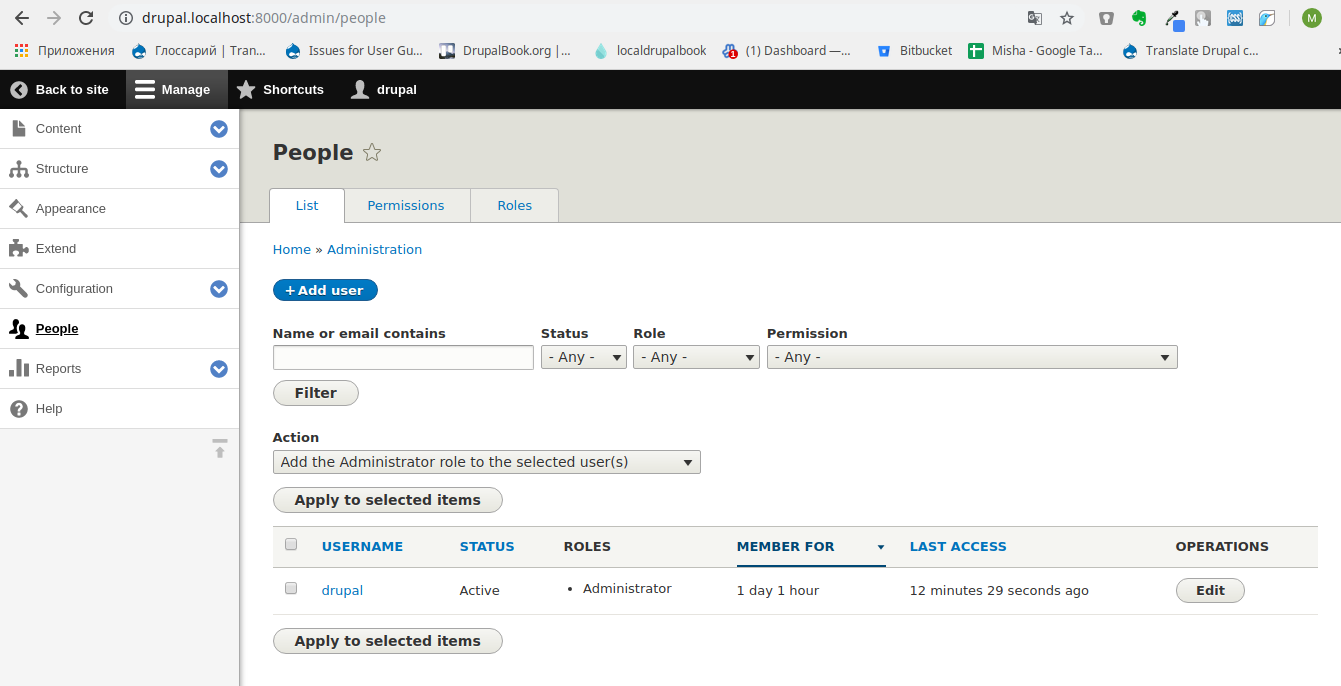
Everything is simple, a table with users and a button to add a new user. If you need to sort users by roles or by date of addition, then just click on the title of the required field.
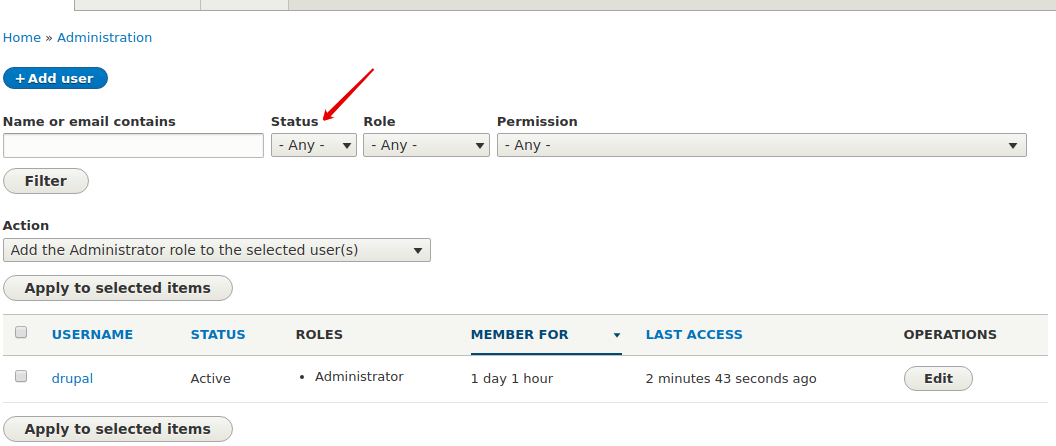
Now let's go to the role tab. By default, we already have the roles of an authorized user, and an anonymous user. Let's add another role moderator. Click the Add user button and fill in the fields. As a result, we will have another role:
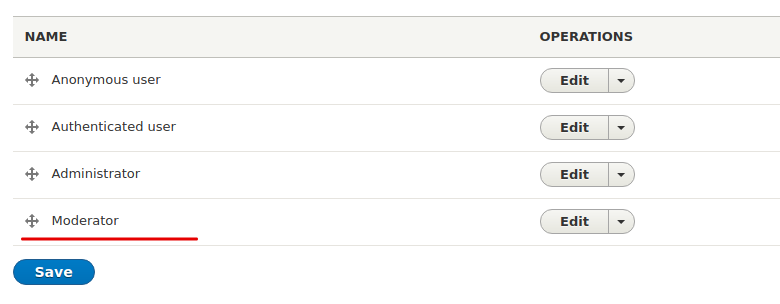
Now let's make a moderator with editing rights of materials. To do this, go to the Permissions tab. On the access rights page, you can set what features each user role has on the site. Let's add rights for the role of moderator so that the moderator can manage the materials on the site:
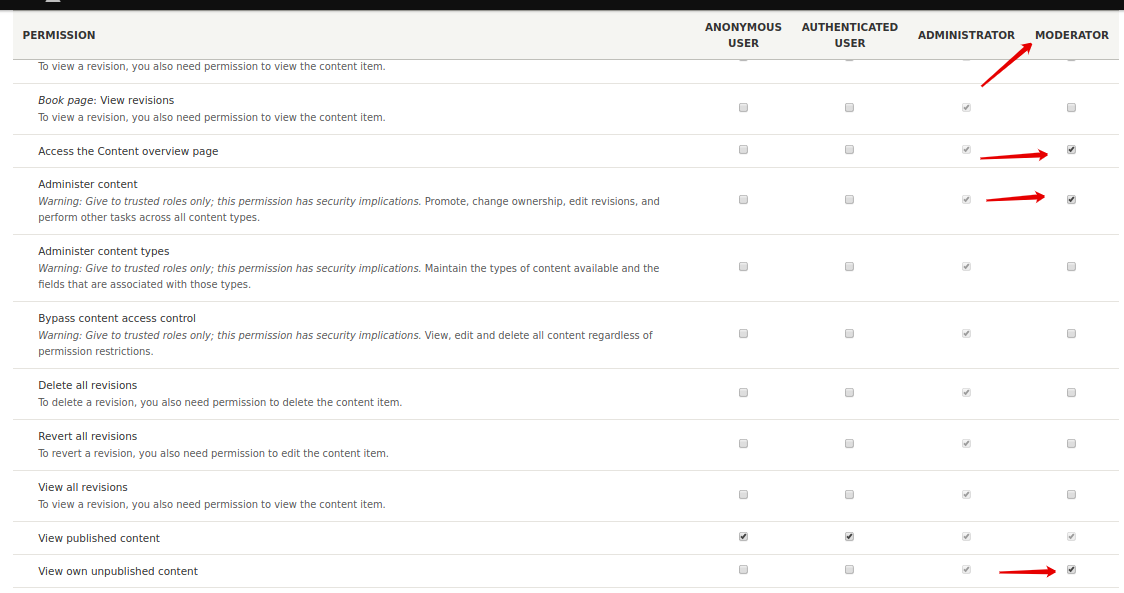
So we created the moderator role and we can add a user moderator. If you have a comment module enabled, you can use the example to add comments to authorized users, but not to anonymous ones.

Now let's create a moderator user and a regular user, for this you need to return to the page of all users. When you add a moderator, do not forget to specify his role:
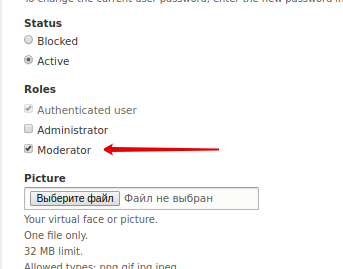
Now we return to the list of users and see what happened with us:
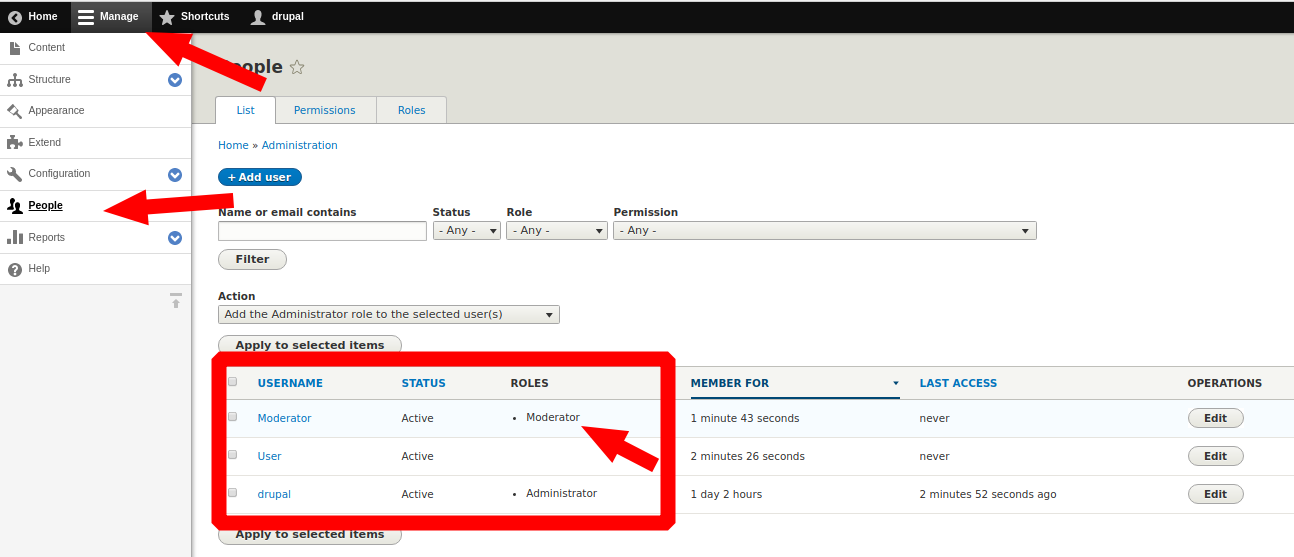
You see that the drupal shows what roles the user has.